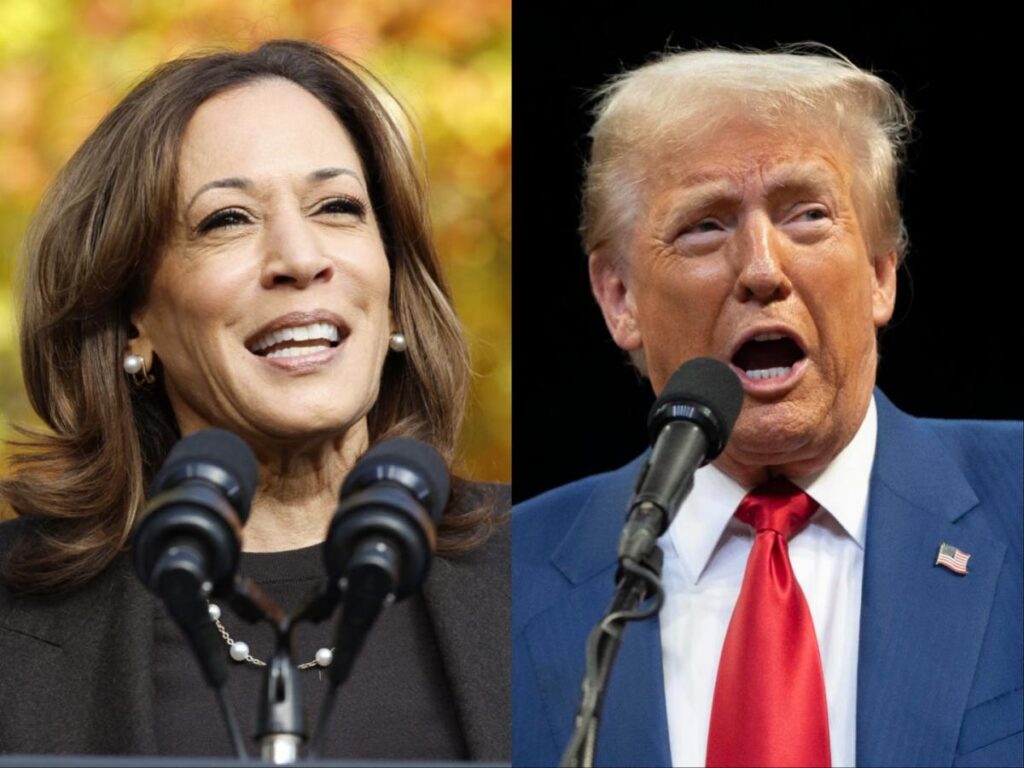As the countdown to Election Day 2024 reaches its final days, the presidential race remains an exceptionally close contest within a uniquely tumultuous political climate. Notably, the dynamics of the campaign have shifted dramatically with key events such as President Joe Biden’s unexpected withdrawal from the race, Vice President Kamala Harris’s rising prominence, and serious security concerns surrounding former President Donald Trump, including two assassination attempts. These developments have created a landscape where control of the White House appears to rest on a razor-thin margin, and polling data offers little clarity. Pollster Kristen Soltis Anderson emphasizes the remarkable stability of the race, with national polling showing minimal movement since the traditional kickoff after Labor Day, indicating an election characterized by an unsettling sense of predictability amidst chaos.
Amid the electoral fray, candidates have ramped up their campaign strategies, particularly in light of Trump’s recent performance against Harris during a widely criticized debate. Despite the absence of a second presidential debate, polls have still indicated a slight narrowing in the race, with Trump gaining ground against Harris. As of now, Trump’s campaign is targeted at specific demographics, particularly young men, where he reportedly leads Harris significantly. This segmentation reveals a broader gender gap, as Harris shows a stronger connection with young women voters. The ongoing engagement of both candidates in the final weeks points to an election poised to break records for its proximity and competitiveness.
In a bid to solidify their positions, both Trump and Harris are calling upon prominent figures within their respective parties for support. Harris has gathered top Democrats, including the Obamas, to mobilize voters, while Trump has also begun bringing in high-profile names for his rallies, albeit without the same level of support from traditional Republican figures. The contrasting political styles reflect a broader narrative about the candidates’ approaches. Trump’s inclination toward rallying supporters with similar outsider credentials diverges from conventional party politics, a tactic born out of a desire to maintain his unique brand of political identity.
The electoral strategies of both campaigns are firmly rooted in the battleground states that could determine the outcome of the election. Harris’s path to victory hinges on maintaining the Blue Wall states of Michigan, Pennsylvania, and Wisconsin, which traditionally lean Democratic. However, Trump’s resurgence in these regions is evident, and if he succeeds in winning Pennsylvania again, he could secure the presidency. On the flip side, if Harris loses ground in traditional Democratic strongholds, she could compensate by winning over competitive states like North Carolina or Georgia, both areas that emerged as vital targets in the last election cycle.
Trump’s focus remains on flipping the pendulum states back to Republican alignment, particularly in the Great Lakes region. Harris’s campaign strategy, once mirroring President Biden’s path to victory, will require her departure from typical electoral paradigms, making gains in swing regions essential. The tightening of the polls signals that voters in these areas are still undecided, with both candidates needing to maximize their voter outreach efforts. Harris’s campaign continues to work on galvanizing her base in these crucial districts, where demographic shifts could aid or hinder her performance depending on voter turnout.
As the final days close in on Election Day, the stakes have never been higher for both candidates, with the potential for unexpected “October surprises” looming. The consistency seen in polling has set a suspenseful stage for an election that may very well rest on last-minute changes in voter sentiment. The political landscape is charged with excitement, anticipation, and uncertainty, highlighting the evolution of American politics in an era marked by division and fervor. The engagement of key demographics, celebrity endorsements, and last-minute campaigning all contribute to an increasingly unpredictable outcome, as both Trump and Harris strive to capture the hearts and minds of American voters in a historic electoral showdown.

